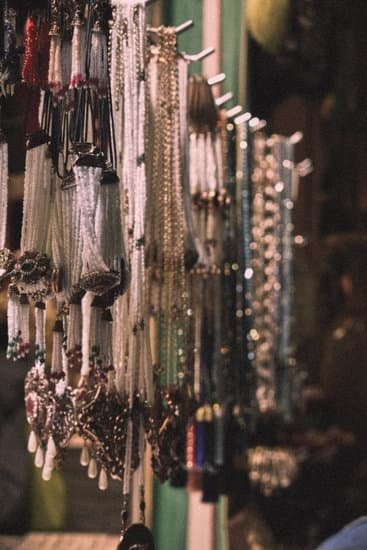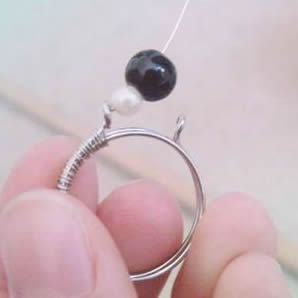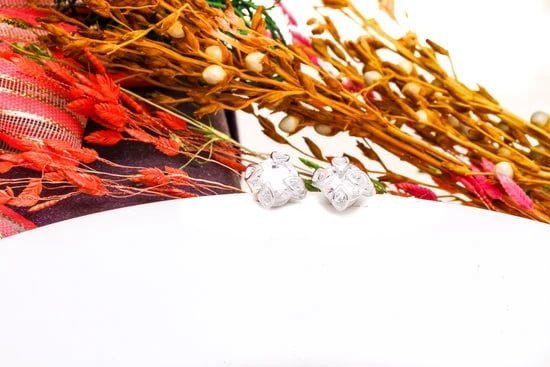When it comes to jewelry making, having the right tools can make all the difference in creating stunning and professional-quality pieces. One tool that has been gaining popularity among jewelry makers is the Diy Jewelry Roller Mill. But what exactly is a jewelry roller mill, and why is it so important in the world of jewelry making?
A Diy Jewelry Roller Mill is a versatile tool used by jewelers to manipulate and shape metal into desired forms. It consists of two rollers that are adjustable and rotate in opposite directions, allowing you to apply pressure on the metal and create various effects such as thinning, flattening, or texturing. This tool not only saves time and effort but also provides precise control over the shaping process, making it an invaluable asset for anyone involved in jewelry making.
Why is a Diy Jewelry Roller Mill important? First and foremost, it offers endless possibilities for creativity and design experimentation. With a roller mill, you can easily create unique textures on metals or add patterns to your jewelry pieces, elevating them from ordinary to extraordinary. Additionally, by using a roller mill, you can achieve consistent thickness throughout your metal sheets or wire, ensuring that your finished pieces have a professional look.
In the following sections, we will delve deeper into the world of Diy Jewelry Roller Mills. We will guide you through building your own roller mill from scratch with our comprehensive list of tools and materials needed. We will provide step-by-step instructions on assembling your roller mill along with helpful diagrams and measurements. Furthermore, we will share expert advice on how to effectively utilize this tool in your craft while staying safe with essential precautions.
If you are looking to enhance your jewelry-making skills or take your designs to the next level, then a Diy Jewelry Roller Mill should definitely be a part of your toolkit. So let’s dive into this exciting journey where creativity meets functionality as we explore the endless possibilities and benefits that come with owning a Diy Jewelry Roller Mill.
Tools and Materials Needed for Building a Diy Jewelry Roller Mill
Building your own jewelry roller mill requires some specific tools and materials. Here is a comprehensive list of items you will need:
- Steel or Aluminum Rollers: These are the main components of your jewelry roller mill. You will need two rollers made of either steel or aluminum, depending on your preference and budget. Ensure that the rollers have a smooth surface that can effectively roll and manipulate metal sheets.
- Bearings: High-quality bearings are essential for smooth operation and durability of your roller mill. Look for bearings specifically designed for heavy-duty applications to ensure they can handle the pressure exerted during rolling.
- Steel Frame or Base: The frame provides stability and support for all the components of your roller mill. You can either purchase a pre-made steel frame or build one yourself using strong steel bars welded together.
- Gears, Chains, or Belts: These mechanisms are used to power the rollers and enable them to rotate smoothly. Choose gears, chains, or belts that are strong enough to withstand continuous use without breaking or slipping.
- Motor: A reliable motor is necessary to power your roller mill effectively. Make sure to choose a motor with enough horsepower to accommodate the size and weight of your roller mill setup.
- Control Box: A control box allows you to regulate the speed and direction of the rollers. Look for a control box with clear labels and easy-to-use buttons or knobs.
- Safety Features: It is important to prioritize safety when building your jewelry roller mill. Consider including features such as emergency stop buttons, protective covers for moving parts, and safety switches that prevent accidental start-up.
- 8.Other Tools: In addition to the main components listed above, you will also need various tools such as welding equipment (if building your steel frame), cutting tools, measuring instruments, and fasteners (screws, nuts, bolts) to assemble the roller mill.
Having all the necessary tools and materials is crucial for building a functional and efficient jewelry roller mill. Make sure to gather everything before starting your construction process to avoid delays or interruptions.
Step-by-Step Guide for Building a Diy Jewelry Roller Mill
Building your own jewelry roller mill can be a rewarding and cost-effective project. With the right tools and materials, you can create a roller mill that meets your specific needs and allows you to achieve professional results in your jewelry making. In this step-by-step guide, we will walk you through the process of building your very own DIY jewelry roller mill.
Step 1: Gather all the necessary tools and materials
Before diving into the construction process, it is important to gather all the tools and materials needed for building your jewelry roller mill. Here is a comprehensive list that you will need:
– Metal cutting saw.
– Drill press with bits.
– Welding equipment.
– Angle grinder.
– Clamps.
– Measuring tape.
– Square ruler.
As for materials, you will require:
– Steel sheets/plates.
– Steel rods/tubes.
– Bearings.
– Gears.
– Motor or hand crank.
Step 2: Design and plan your roller mill
Once you have gathered all the necessary tools and materials, it’s time to design and plan your roller mill. Take measurements of all the components, including the base, rollers, gears, motor fittings, etc. You can use software programs or sketch out the design on graph paper.
It is important to consider factors such as roller size, gear ratio, and motor power when designing your roller mill. These variables will impact its functionality and performance. Use diagrams and sketches to visualize each component’s placement before proceeding with construction.
Step 3: Constructing the jewelry roller mill
Now that you have completed the design phase, it’s time to construct your DIY jewelry roller mill. Start by cutting metal sheets according to measured dimensions for the base, rollers, and other components using a metal cutting saw. Ensure that all pieces are cut accurately for precise assembly.
Next, weld together the frame using steel rods and tubes. Clamp the parts together securely before welding to maintain alignment. Pay close attention to the angles and squareness of the frame to ensure stability.
Assemble the gears, bearings, and rollers, following your design and plan. Attach a motor or hand crank mechanism to drive the roller mill. Make sure all moving parts are aligned properly and adequately lubricated for smooth operation.
Building your own jewelry roller mill may require some trial and error as you fine-tune the design and make adjustments along the way. Remember to use appropriate safety equipment throughout the construction process, such as gloves, safety glasses, and a face shield if necessary.
By following this step-by-step guide, you can create a personalized DIY jewelry roller mill that fits your specific needs and enhances your jewelry making process.
Tips and Tricks for Using a Diy Jewelry Roller Mill
When it comes to using a DIY jewelry roller mill, there are several tips and tricks that can help you achieve professional results. Whether you are a beginner or experienced in jewelry making, these expert pieces of advice will elevate your work to the next level.
1. Lubrication: One of the most important tips for using a DIY jewelry roller mill is to ensure proper lubrication. Applying a small amount of oil or lubricant to the rollers before each use will reduce friction and prevent any damage or wear on the machine. It is crucial to choose a lubricant specifically made for jewelry rolling mills to avoid any potential contamination.
2. Gradual Rolling: Another important tip is to roll your material gradually through the mill. Start with a thicker setting and gradually decrease it as you pass the material through multiple times. This will ensure even pressure distribution and prevent any uneven stretching or thinning of your metal.
3. Annealing: Annealing is the process of heating and cooling metal to make it more malleable. When working with harder metals, such as silver or gold, it is recommended to anneal your metal before rolling it through the mill. This will make it easier to manipulate, reduce stress on the rollers, and also improve the overall texture and finish of your jewelry piece.
4. Texture Plates: To achieve unique textures on your metal, consider using texture plates in conjunction with your DIY jewelry roller mill. Texture plates have various designs imprinted on them, which can be transferred onto your metal during the rolling process. This technique adds depth and visual interest to your jewelry designs, giving them a professional touch.
5. Cleaning: Regularly cleaning your DIY jewelry roller mill is essential for its optimal performance. After each use, remove any debris or residue from the rollers using a soft brush or cloth. Make sure not to use abrasive materials that may scratch the surface of the rollers.
By following these tips and tricks for using a DIY jewelry roller mill, you can achieve professional-quality results in your jewelry making projects. Experiment with different materials, textures, and techniques to create unique and visually stunning pieces that will impress both yourself and others.
Safety Precautions to Consider when Using a Diy Jewelry Roller Mill
When it comes to using a Diy Jewelry Roller Mill, safety should be the top priority. Working with machinery can be dangerous if not done properly, so it is essential to take the necessary precautions to ensure a smooth and accident-free experience. Here are some important safety measures to consider when using a Diy Jewelry Roller Mill:
- Personal Protective Equipment (PPE): Always wear the appropriate PPE to protect yourself from potential hazards. This may include safety glasses or goggles, gloves, and an apron. Protecting your eyes, hands, and body is crucial in preventing injuries.
- Stable Work Surface: Ensure that your Diy Jewelry Roller Mill is placed on a stable work surface or bench that can securely hold its weight and prevent any unnecessary movement or vibrations during operation. A sturdy work surface will help minimize the risk of accidents caused by equipment instability.
- Proper Operation: Familiarize yourself with the instruction manual of your roller mill and follow all operating procedures carefully. Make sure you understand how to start and stop the machine correctly, as well as how to adjust the rollers for desired thicknesses.
- Adequate Lighting: Ensure that your work area is properly illuminated so you can see what you are doing clearly. Insufficient lighting increases the risk of accidents due to poor visibility.
- Avoid Overloading: Do not overload the roller mill with excessive materials beyond its capacity as this can cause strain on the machine’s motor or rollers, leading to malfunctions or accidents.
- Keep Hands Clear: Never attempt to feed materials into the roller mill or remove them while it is in motion. Always wait for the machine to come to a complete stop before making any adjustments or handling materials.
- Emergency Stop Button: Locate and familiarize yourself with the emergency stop button on your roller mill in case of an unexpected situation where immediate shut down is required.
By following these safety precautions, you can minimize the risk of accidents and ensure a safe and enjoyable experience with your Diy Jewelry Roller Mill.
| Safety Precautions | Description |
|---|---|
| Personal Protective Equipment (PPE) | Always wear the appropriate PPE to protect yourself from potential hazards. This may include safety glasses or goggles, gloves, and an apron. |
| Stable Work Surface | Ensure that your Diy Jewelry Roller Mill is placed on a stable work surface or bench that can securely hold its weight and prevent any unnecessary movement or vibrations during operation. |
| Proper Operation | Familiarize yourself with the instruction manual of your roller mill and follow all operating procedures carefully. Make sure you understand how to start and stop the machine correctly, as well as how to adjust the rollers for desired thicknesses. |
Alternatives to Building a Diy Jewelry Roller Mill
When it comes to creating a DIY jewelry roller mill, not everyone may feel comfortable or confident in their ability to build one from scratch. Fortunately, there are alternative options available for those who still want to enjoy the benefits of a jewelry roller mill without having to build it themselves.
One option is to purchase a pre-made jewelry roller mill. These pre-made mills are designed and manufactured by professionals with expertise in jewelry making equipment. They offer a convenient solution for those who prefer not to spend time assembling their own roller mill. Pre-made options come in various sizes and configurations, allowing users to choose the one that best suits their specific needs.
Another alternative is to utilize professional services for jewelry rolling and texturing. Many professional jewelry studios and workshops offer services where they can roll or texture metal for you using their own high-quality roller mills. This option is especially beneficial for those who only need occasional or limited use of a roller mill but do not want the hassle of purchasing or building their own.
These alternatives allow individuals to still experience the advantages of using a jewelry roller mill without the time, effort, or technical know-how required for building one from scratch. Whether you opt for a pre-made mill or the services of professionals, these alternatives provide accessible options that make the process of jewelry making more convenient and enjoyable for all levels of expertise.
Maintenance and Care for a Diy Jewelry Roller Mill
Regular Cleaning and Lubrication
One of the most important aspects of maintaining a Diy Jewelry Roller Mill is regular cleaning and lubrication. Over time, debris, dirt, and metal particles can accumulate on the rollers, which can negatively affect their performance and consistency. To avoid this, it is recommended to clean your roller mill after each use.
This can be done by wiping down the rollers with a cloth or brush to remove any visible debris. For more thorough cleaning, you can use a mild soap solution and warm water to gently scrub the rollers, making sure to dry them thoroughly afterwards.
In addition to cleaning, proper lubrication is essential in keeping your roller mill running smoothly. Lubricating the bearings will reduce friction and wear, prolonging the lifespan of your machine. It is recommended to use a high-quality lubricant specifically designed for roller mills.
Apply a small amount of lubricant onto each bearing using a brush or oiler, ensuring that all moving parts are adequately coated. However, be cautious not to over-lubricate as it may lead to excessive buildup and cause other issues.
Inspecting for Wear and Damage
To ensure optimal performance and safety when using your Diy Jewelry Roller Mill, it is crucial to regularly inspect for any signs of wear or damage. Check for any loose or misaligned screws, bolts, or nuts that may have come loose during operation. Tighten them securely if necessary. Examine the rollers for any dents, scratches, or warping that could affect their ability to roll metal evenly.
It is also important to inspect the gears and mechanisms of your roller mill. Look for signs of excessive wear such as chipped teeth or rough edges on the gears. If any damage is found, it may be necessary to replace these parts before continuing to use the machine.
Proper Storage
When not in use, it is essential to store your Diy Jewelry Roller Mill properly to prevent damage and ensure its longevity. Avoid exposing the machine to extreme temperatures or high humidity, as this can lead to rust or corrosion. Store the roller mill in a clean and dry environment, protecting it from dust and dirt. It is recommended to cover the machine with a cloth or plastic sheet to provide an additional layer of protection.
Additionally, it is advisable to store the rollers in an upright position or horizontally on a padded surface to avoid warping. This will help maintain their shape and functionality over time.
By following these maintenance and care guidelines for your homemade jewelry roller mill, you can ensure that it remains in top condition and continues to deliver professional results for your jewelry making projects. Proper cleaning, lubrication, regular inspections for wear and damage, and appropriate storage will contribute to its optimal performance and longevity.
Inspiration and Creative Ideas for Using a Diy Jewelry Roller Mill
Using a DIY jewelry roller mill opens up a world of possibilities when it comes to creating unique and textured pieces. This section will provide you with inspiration and creative ideas on how to use your DIY jewelry roller mill to its fullest potential.
Pattern Rolling
One of the most exciting ways to utilize a DIY jewelry roller mill is through pattern rolling. Pattern rolling allows you to imprint different designs onto your metal sheet or wire, adding depth and texture to your jewelry pieces. Whether you prefer geometric shapes, floral motifs, or abstract patterns, the possibilities are endless. Experiment with various patterns and designs by using pattern rolls specifically designed for jewelry making or by creating your own custom pattern rolls.
To achieve pattern rolling with your DIY jewelry roller mill, simply insert the metal sheet or wire between the rollers, ensuring that it is securely held in place. Then, carefully turn the handle or power on your roller mill if it is motorized, watching as the pattern roll impresses its design onto the metal surface. The result is a beautifully textured piece that adds dimension and visual interest to your creations.
Texturing
In addition to pattern rolling, texturing is another fantastic technique made possible by a DIY jewelry roller mill. Texturing involves using various materials and objects to create unique textures on metal surfaces. By placing items such as leaves, fabric scraps, or even sandpaper onto the metal before running it through the roller mill, you can achieve textured effects that resemble natural elements or create an entirely custom look.
Experiment with different textures by layering multiple objects on top of each other or using different types of materials for varying effects. For example, wrapping a piece of lace around your metal sheet before sending it through the roller mill can result in delicate lace-like patterns that add a touch of elegance to your designs. Remember to secure these materials tightly so they adhere well during the process.
Embossing
Embossing is yet another technique that can be achieved using a DIY jewelry roller mill. It involves creating raised or recessed designs on metal surfaces to add depth and detail to your pieces. Embossing allows you to create intricate patterns, letters, or even decorative elements that catch the light and make your jewelry stand out.
To emboss with your DIY roller mill, you will need to use embossing plates or template designs specifically made for jewelry making. Place the metal sheet or wire between the rollers and position the embossing plate or template on top of it.
Carefully roll the metal through the mill, ensuring that it makes contact with the embossing plate/template throughout the process. The result will be a beautifully embossed piece that adds a touch of sophistication and uniqueness to your jewelry creations.
In summary, a DIY jewelry roller mill offers endless creative possibilities in jewelry making. Whether you choose pattern rolling, texturing, or embossing, there are countless ways to explore texture, dimension, and detail in your designs. Experiment with different techniques and materials to create one-of-a-kind pieces that truly reflect your creativity and personal style.
Troubleshooting Common Issues with a Diy Jewelry Roller Mill
Creating your own jewelry roller mill can be a rewarding endeavor, but like any DIY project, it may come with its fair share of challenges. In this section, we will explore some common problems that users may encounter with their homemade roller mills and offer effective solutions to resolve them.
One common issue that users may face is uneven pressure distribution on the rollers. This can result in inconsistent thickness or texture on the rolled metal. To address this problem, it is important to ensure that the rollers are properly aligned.
Check for any obstructions or debris that may be causing uneven pressure and clean the rollers thoroughly before each use. Additionally, you can try adjusting the tension on the rollers to achieve a more even pressure across the entire surface.
Another common problem is excessive vibrations during operation. Excessive vibrations can lead to poor rolling results and can potentially damage the roller mill itself. One possible cause of this issue is an imbalance in the rollers or incorrect alignment. Make sure that all parts are securely fastened and aligned correctly. If necessary, you can refer back to the step-by-step guide in Section 3 to double-check your assembly.
It is also essential to regularly lubricate your roller mill to ensure smooth operation and prevent premature wear and tear. Insufficient lubrication can result in increased friction, which not only affects the performance of your roller mill but also poses a safety risk. Be sure to use an appropriate lubricant recommended by the manufacturer and apply it according to their guidelines.
Conclusion
In conclusion, building a DIY jewelry roller mill can be a valuable addition to any jewelry maker’s toolkit. Throughout this article, we have discussed the importance of a jewelry roller mill and provided a comprehensive guide on how to build one yourself. By following the step-by-step instructions and utilizing the helpful tips and tricks provided, you can create a professional-quality roller mill that will enhance your jewelry making.
Having a DIY jewelry roller mill offers numerous benefits. First and foremost, it allows you to save money by creating your own tool rather than purchasing an expensive pre-made option. Additionally, building your own roller mill gives you the opportunity for customization, allowing you to create a tool that perfectly suits your specific needs and preferences.
Furthermore, with proper care and maintenance, your homemade jewelry roller mill can provide years of reliable performance. Regular maintenance is essential to ensure its longevity and optimal functionality. By following our guidelines on maintenance and care, you can keep your roller mill in top shape and achieve consistently high-quality results.
In conclusion, investing the time and effort into building your own DIY jewelry roller mill is beneficial not only for saving money but also for customizability and long-term usage. From pattern rolling to embossing, this versatile tool opens up a world of creative possibilities in jewelry making.
Whether you choose to build your own or explore other options mentioned in this article, incorporating a jewelry roller mill into your practice will undoubtedly enhance your skills and take your designs to new heights.

Welcome to my jewelry blog! My name is Sarah and I am the owner of this blog.
I love making jewelry and sharing my creations with others.
So whether you’re someone who loves wearing jewelry yourself or simply enjoys learning about it, be sure to check out my blog for insightful posts on everything related to this exciting topic!





